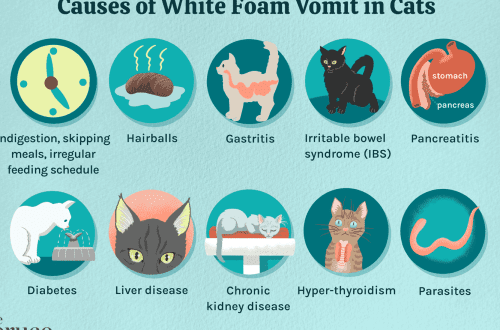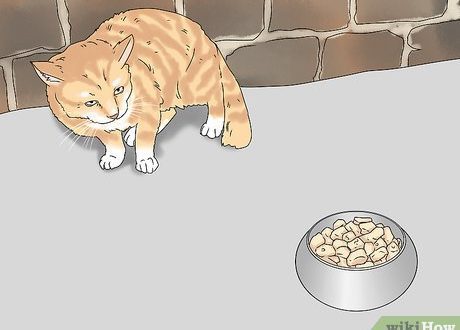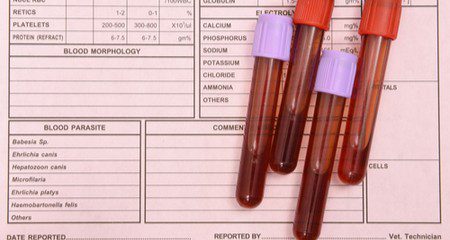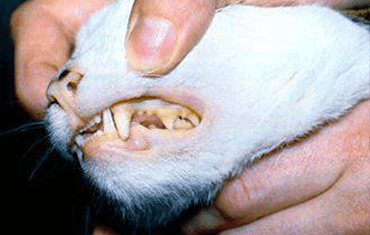
Anemia in cats: causes and treatment

This deviation is accompanied by a decrease in the amount of oxygen concentrated in the hemoglobin protein. Oxidation of iron in red blood cells binds oxygen, which is transported by blood flow to tissues, cells and all body systems. With the development of anemia, oxygen deficiency is formed, which dramatically affects all physiological processes.
The severity of the disease, the duration of the course and the prognosis depend on the cause of anemia (the underlying disease) and the timely visit to the doctor.
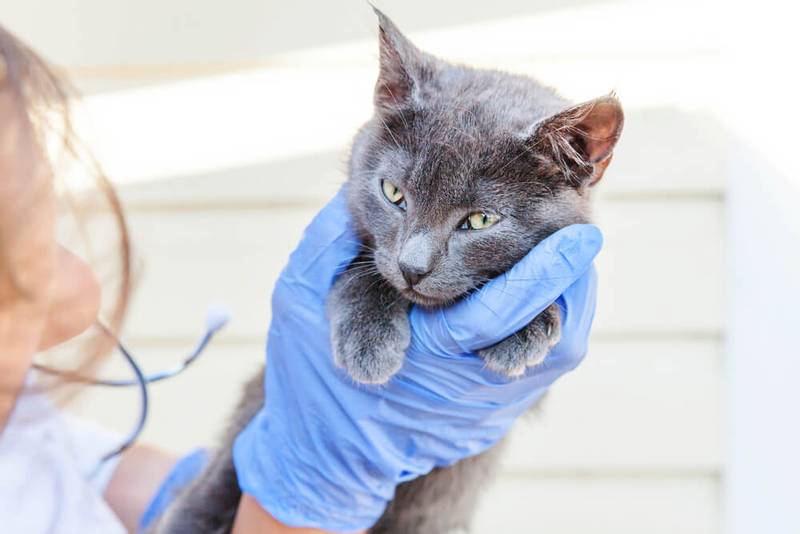
Contents
Causes and types of anemia in cats
As it has already become clear, anemia can be considered a pathological condition in which a decrease in red blood cells is laboratory established. Rarely, it is an independent disease, but anemia should be treated as a disease. Therefore, she must have reasons.
They are two categories of etiological factors. The first affects the production of red blood cells, i.e. the body does not produce new cells or produces them in insufficient quantities. The main reasons for this category include:
Chronic kidney disease (insufficient production of the hormone erythropoietin);
Anemia of chronic inflammation;
Diseases of the bone marrow;
Viral infections (VIC, VLK, panleukopenia);
Polycythemia (a rare disease characterized by increased production of red blood components; however, after reaching a certain threshold, hemorrhage or bleeding occurs in any part of the body, and, as a result, anemia, until the next threshold increase);
nutritional deficiencies (extremely rarely recorded as a cause).

The second group is characterized by the destruction of erythrocytes in the bloodstream, while the function of producing erythrocytes is preserved and even enhanced against the background of their destruction. Therefore, an important step in the diagnosis of anemia is a blood test for reticulocytes, the results should be interpreted by the doctor in conjunction with the history and examination results. This group includes:
acute blood loss (trauma / surgery / bleeding in the gastrointestinal tract due to the use of medications (for example, NSAIDs);
vector-borne diseases (transmitted through tick bites);
poisoning with hemolytic poisons, onions (rarely recorded in cats);
autoimmune hemolytic anemia (a pathological condition in which the cat’s immune system produces antibodies against its own red blood cells);
DIC syndrome.
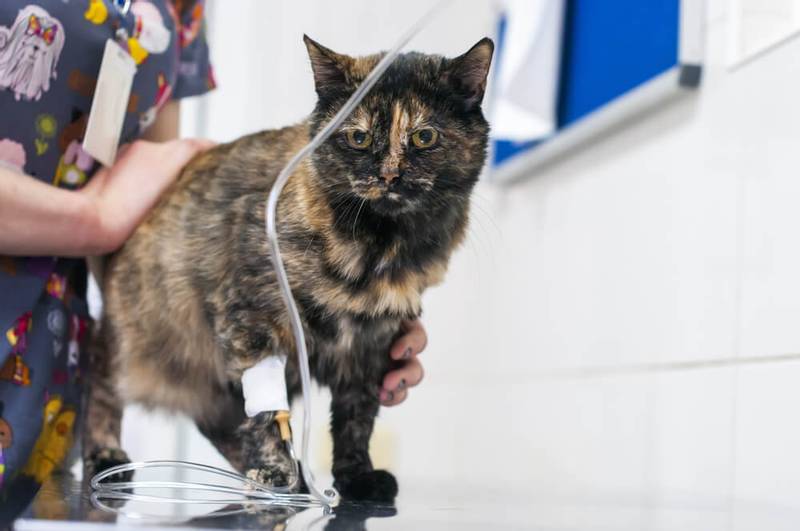
With such an extensive list of etiological factors, it is natural that only veterinarians should be involved in identifying the causes of anemia in cats and treating them. What should the owner of the animal do? With the slightest deviations in behavior, with a decrease in energy, appetite — contact a veterinarian immediately.
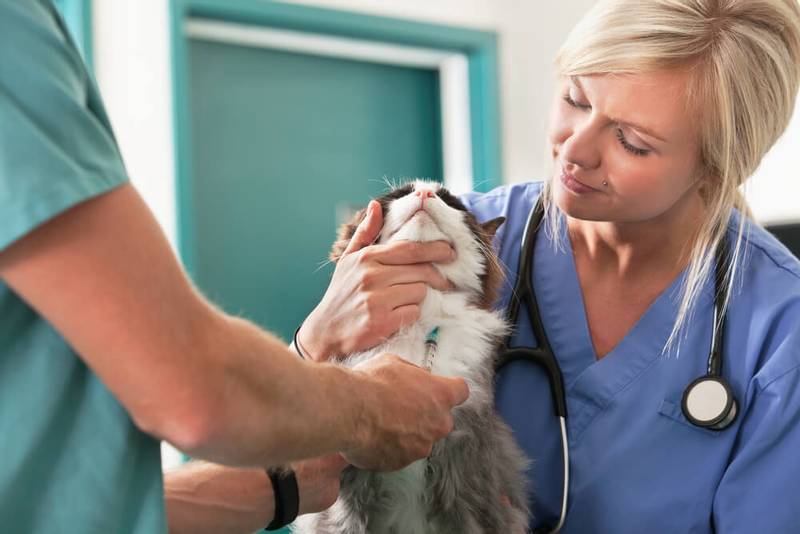
Symptoms of anemia
Basically, the clinical picture with such a pathology is not characteristic. It is characterized by general symptoms that indicate the presence of the disease, but do not characterize it in any way:
lethargy, unsteady gait;
loss of appetite;
drowsiness;
slow development and growth in kittens;
weight loss in adults;
apathetic state.
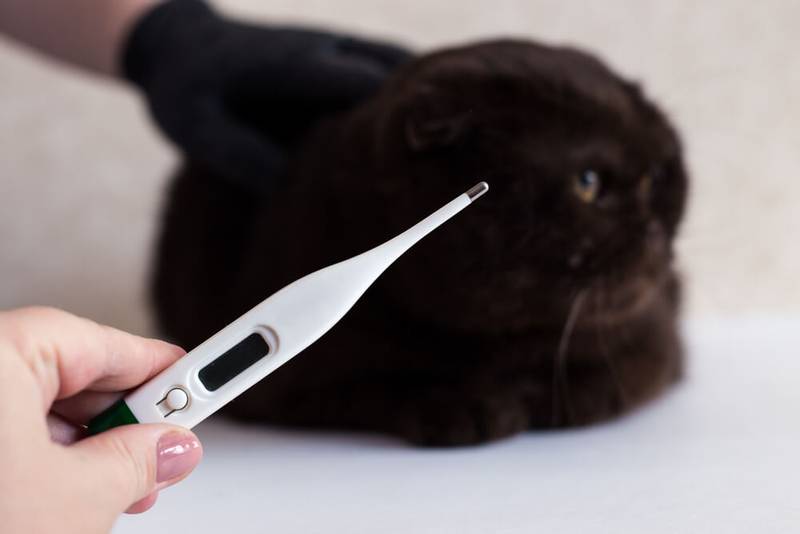
In the process of progression, which can occur within a few days or hours (depending on the cause of the development of anemia), the characteristic symptoms of anemia in cats may begin to appear. — contacting a doctor and treatment in this case should be urgent and urgent. These symptoms include:
pallor of visible mucous membranes (oral cavity, conjunctiva), sometimes — their cyanosis;
fast/shallow breathing;
tachycardia, increased heart rate;
decrease in body temperature to 37 degrees and below.
To accurately establish the disease, it is also necessary to take into account the history data: according to the owner of the cat, the veterinarian determines the age, reproductive status, timing of preventive measures, diet, living conditions, the likelihood of injury, changes in behavior and other circumstances of the onset of the disease.
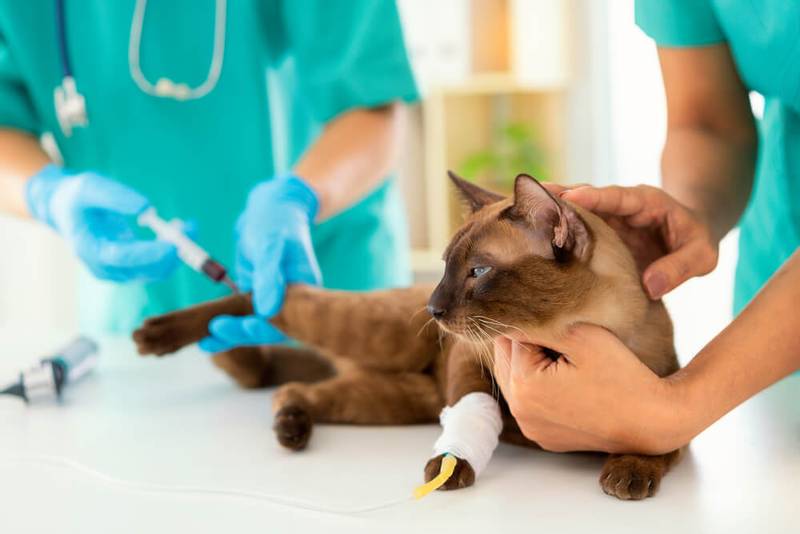
Diagnosis of the disease
An important reminder to pet owners: the established symptoms of anemia must be confirmed by a complex diagnostic examination. Moreover, the reliability and correctness of diagnostics are achieved only by complex measures:
clinical examination allows you to determine the characteristic signs, assess the severity of the general condition, compare them with the data of the anamnesis and suggest possible causes, as well as draw up a plan for the necessary diagnostic and treatment measures;
laboratory research: a general clinical blood test is mandatory; also, depending on the results of the examination and the history data, a biochemical blood test, determination of the level of reticulocytes, a coagulogram, a general urinalysis and narrow specific tests (PCR and ELISA diagnostics to detect diseases preceding the development of anemia) may be required;
instrumental and hardware diagnostics: its necessity is determined in each specific case individually, it is not designed to diagnose anemia, but to identify the causes leading to its development (for example, trauma or neoplasms). Ultrasound, radiography, computed tomography can be prescribed for such a diagnosis.
For greater persuasiveness in the correctness of the diagnosis, qualified veterinarians use a comprehensive diagnostic method.
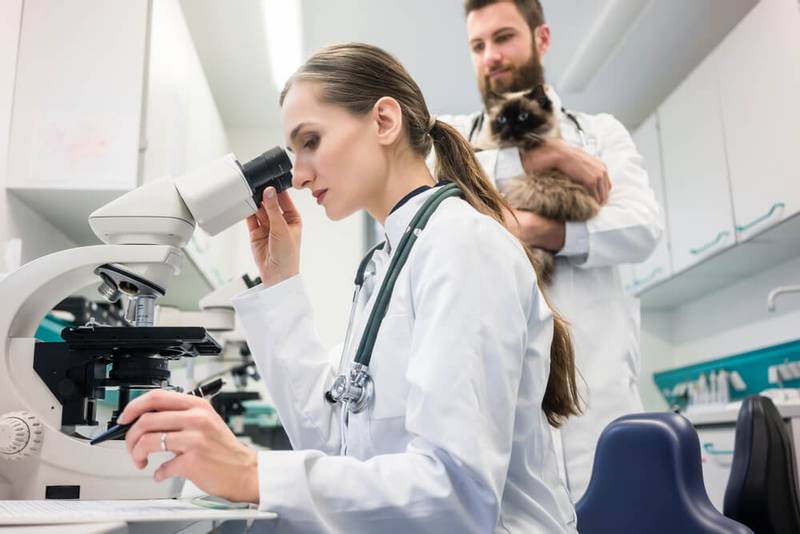
Treatment of anemia in cats
Treatment is determined based on the form of the course, the type of disease and its nature. The main condition for complete recovery after anemia is the elimination of the causes. For example, if infectious anemia is diagnosed in cats, then it is necessary to first suppress the activity of pathogenic microorganisms and eliminate their presence in the body. Thus, the second condition of treatment is formed: it is necessary to take into account the type of anemia. How to treat anemia in a cat and a cat is determined only by the veterinarian who has observed the animal from the very beginning of the disease.
Effective treatments are:
Drug therapy (erythropesis stimulants and iron preparations);
Hemotransfusion (blood transfusion).
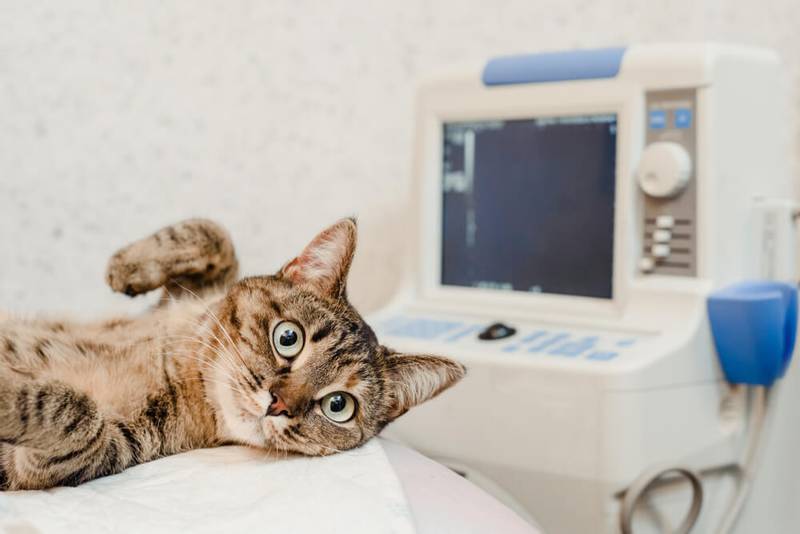
Often, only the use of several therapeutic methods at once leads to a positive result of treatment.
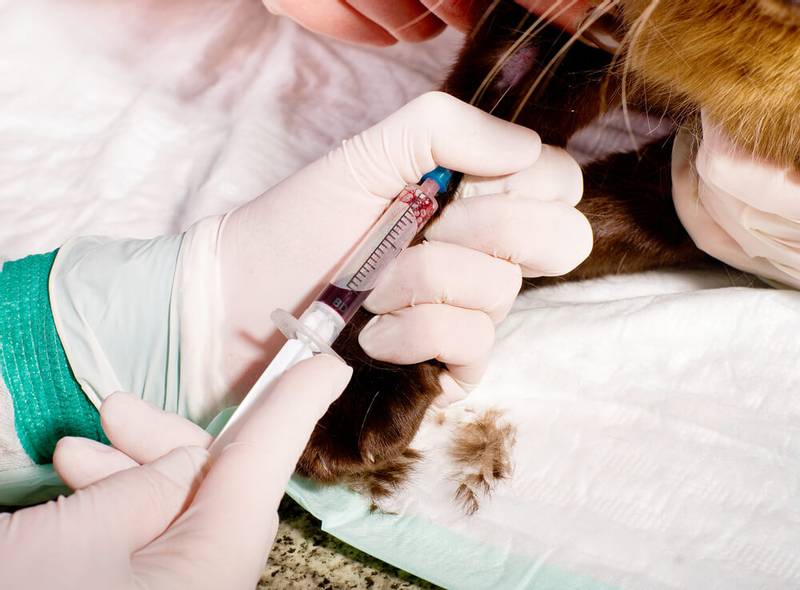
Anemia prevention
Prevention of the development of anemia primarily consists in the timely and regular prevention of diseases leading to it and in the conditions of detention:
treatment for ectoparasites (flea infestation and vector diseases transmitted through the bite of ixodid ticks lead to the development of anemia);
deworming;
annual vaccination against major viral infections;
balanced feeding — it is preferable to use premium or super-premium food at the dosage recommended by the manufacturer, indicated on the package. If you want to feed your pet with natural products, you need to contact a nutritionist to make a diet, since the needs of each pet are individual and making the diet on your own or according to general recommendations leads to a deficiency and imbalance of essential nutrients;
lack of free range to avoid injury and poisoning.
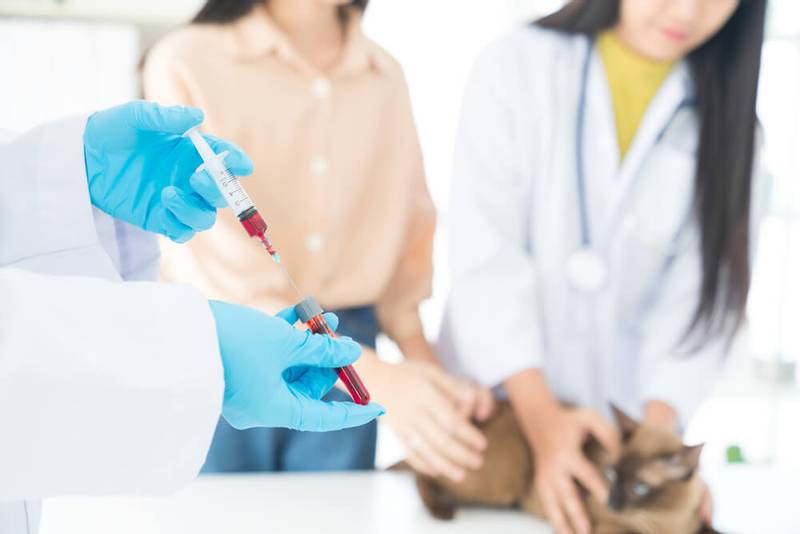
Even if all the above measures are observed, preventive examinations by a veterinarian (at least once every six months) and blood tests to detect asymptomatic course and early stages of diseases should not be neglected.
August 24 2020
Updated: July 13, 2021



